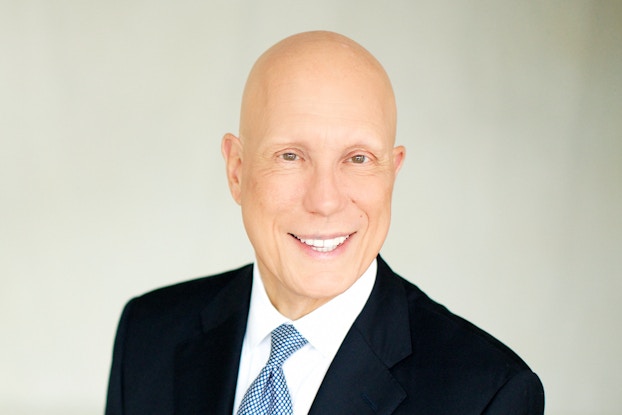
As the nation retreats from stores and restaurants to air travel to thwart the spread of COVID-19, the consumer economy has come to a near-screeching halt, with a range of business sectors taking massive hits.
Here, experts weigh in on the impact thus far of the coronavirus on U.S. retail, hospitality, foodservice and fashion, and glimpse a post-pandemic business landscape.

Retail: For the nation’s biggest private employer, ‘we have no idea when consumer spending will bounce back’
Retail is the juggernaut of the U.S. economy, contributing a whopping $2.6 trillion, or about 25%, to the annual GDP, according to the National Retail Federation.
As an ever-growing list of national players like Macy’s, Nordstrom, Nike and Apple shutter their doors in the wake of the virus, and with Simon, the country’s largest mall operator, closing over 200 shopping centers, a sector that’s already been battered by widespread closures is taking another hit, as stores go dark around the country.
“Retail is the nation’s largest private-sector employer, supporting 52 million jobs overall,” Matt Shay, president and CEO of the NRF, told CO—. “While select retailers are not seeing diminished sales — warehouse clubs, grocery and drug stores — as consumers stock up on essential items, others are struggling.”
Retailers that sell wants not needs, like apparel merchants and department stores, for example, will bear the brunt of this crisis, Ray Wimer, an assistant professor of the retail practice at Syracuse University’s Martin J. Whitman School of Management, told CO—.
Crisis precedents
The coronavirus pandemic is vastly different from other crisis situations, Wimer said. “It took consumers about six weeks to start spending in the retail sector after 9/11; about six months post the [2008] crash. Right now, there is so much uncertainty that we have no idea when consumer spending will bounce back,” he said. “It really depends on how the government continues to place restrictions that help flatten the curve and when these restrictions will be lifted. Being optimistic, the third quarter for retail should bounce back if restrictions are ended by May 31.”
Still, “the revenue being lost right now is not going to be made up, so many retailers will have a huge issues with meeting loan obligations,” Wimer said. “There will also be some supply chain issues as there will be backup of product, which may mean [retailers] cancel the orders with manufacturers.”
Adapting and potential silver linings
The virus has fueled an uptick in online shopping, which still accounts for a mere 10.7% of total U.S. retail sales. According to a recent survey of 1,000 consumers by brand protection firm Red Points, 58% of Americans have purchased more items online compared to in-store than they normally would have, due to fears of the coronavirus.
That shift could lead to changed buying behavior post-pandemic, turning longtime e-commerce holdouts into converts, such as older shoppers who are now most at risk, according to eMarketer.
What’s more, nascent retail models could gain momentum. “Post-2008 saw the rise of off-price retail and value retailers,” Wimer said. “Will the consumer decide that they are okay with not shopping as much for new items? Will this mean that rental or consignment retail will take off?”
Global consumer demand has been adversely affected by both anxiety and the absence of in-person engagement.Susan Scafidi, founder and director, Fashion Law Institute at Fordham University

The hospitality picture: ‘We could see fewer people wanting to travel overall’
The health crisis is costing the U.S. hotel industry a reported $1.4 billion a week in what’s shaping up to be an unprecedented sector hit, as occupancy rates plummet.
“Hotel demand will be down sharply in the near term as the public puts off traveling because of coronavirus fears and regulations that limit public gatherings,” Peter Trombetta, Moody’s lodging and cruise analyst, told CO—.
Moody’s March report downgraded its outlook for the U.S. lodging and cruise industry from stable to negative, forecasting 2020 earnings declines among companies rated in the sector, compared to about 5% growth in 2019. The North American consumer accounts for more than half of the revenue for all lodging and cruise companies, according to a report from the ratings agency.
On March 17, the hospitality industry asked the Trump Administration for $150 billion in aid due to the virus, just as Marriott set plans to furlough thousands of hotel workers.
Crisis precedents
“The impact to hotel companies could be greater than after the 9/11 terrorist attacks when we saw people still wanted to travel but decided to stay closer to home,” Trombetta said. “With the spread of COVID-19 and the CDC’s advice to maintain social distancing, we could see fewer people want to travel overall,” he said.
“Hyatt [for example] reported increased near term group cancellations and slower business travel, which we expect to be the case for all hotel companies that cater to the business traveler including Marriott and Hilton,” he said. “But slowing leisure demand is following quickly, which makes no hotel company immune to the impact from COVID-19.”
The large hotel companies generate the bulk of their revenue through franchise and management fees, Trombetta said. “These fees are earned on the hotel’s revenue that is generated. If that hotel earns less revenue because occupancy is down, there is no real way that the hotel company can offset that,” he said. “If revenue drops enough, the companies would look to cut costs and spending and also suspend share repurchases or even dividends.”
Adapting and potential silver linings
While the hotel market’s recovery from past crises such as 9/11 nationally, the SARS breakout in Toronto and Zika breakout in Miami took 14 to 25 months, CBRE points to “one cause for hope for fast recovery,” according to a report from the commercial real estate firm. “Chinese hotels had nearly fully recovered from the March 2003 SARS breakout by July of that year when SARS was contained,” the report said.
Coronavirus Guide for Small Businesses
CO— is working to bring you the best resources and information to help you navigate this challenging time. Read on for our complete coronavirus coverage.

Foodservice: For restaurants, ‘business just disappeared overnight’
For much of the U.S. restaurant industry, “business just disappeared overnight,” Erik Thoresen, food industry expert and director at Midwest Capital Group, told CO—.
Overall, “the coronavirus will clearly reverse growth trends for both grocery and foodservice channels,” he said.
As the nation’s empty supermarket shelves and toilet paper shortages attest, grocers have been struggling to keep up with huge panic-buying-driven demand. “The government won’t shut down groceries, as people can’t get essentials,” Thoresen said.
And with quick-service food merchants like McDonald’s to Starbucks and Sweetgreen pivoting to delivery-and-pick-up-only mode, “that sector could continue to maintain a strong level of demand,” he said.
Full-service restaurants are, of course, an entirely different story. COVID-19 has sparked diners’ exodus and local government-imposed closures. In addition, the sector’s high rent and labor costs and tight profit margins “will redefine the landscape of what restaurants exist in local markets and towns across the country,” Thoresen said.
Crisis precedents
During national crises — like 9/11 and the financial meltdown of 2008 — when consumer confidence is rattled, “we tend to see people trading down in terms of their spending,” Thoresen said. “What’s drastically different in this scenario is that there’s no opportunity to trade down in the restaurant sector,” he said. “Spending at restaurants is going to grocery stores.”
Adapting and potential silver linings
The grocery sector has been notoriously late to the e-commerce movement, still accounting for only 2% to 5% of the $743 billion U.S. grocery retail market, according to CBRE Research.
But as a newly sequestered nation flocks online for food, downloading delivery apps like Instacart, Walmart Grocery and Shipt in record numbers, online grocery shopping could finally take flight.
At the same time, national full-service chains in pause-mode could seize the moment to evaluate the performance of their restaurant fleets, Thoresen said.
Big restaurant chains like Denny’s, Applebee’s and TGI Fridays, “which have more resources to weather the storm, will use this crisis as a time to evaluate what locations they should shut down,” he said.

The fashion fallout: ‘the need for a spring wardrobe refresh has all but disappeared’
“Global consumer demand has been adversely affected by both anxiety and the absence of in-person engagement,” Susan Scafidi, founder and director of the Fashion Law Institute at Fordham University, told CO—. “But even if consumers turn to online shopping to while away hours in quarantine, key links in fashion's supply chain have been seriously impacted by the coronavirus.”
According to the World Trade Organization, over 37% of the world's textile exports come from China, up from 10% in 2000, and Italy is a global center of luxury manufacturing, she said. “While China appears to have contained the virus and Italy's lockdown has thus far had an exception for manufacturing, illness could still cause looms and sewing machines to fall silent,” Scafidi said.
“Fashion is a super-powerful industry, with speed and flexibility far beyond most categories of consumer goods, but its kryptonite is invisibility — and the practice of social distancing has just rendered most of us invisible to one another,” she said. “With social and professional gatherings canceled and telecommuting becoming the new normal, the need for a spring wardrobe refresh has all but disappeared.”
Crisis precedents
“The coronavirus crisis is unlike previous market disruptions that allowed conspicuous consumption to be recast quickly as a virtue,” Scafidi said.
“After 9/11, President Bush encouraged America to go shopping; after the 2008 crash, [Vogue editor] Anna Wintour invited us all to Fashion's Night Out. Today, officials are encouraging stores to close and consumers to stay home,” she said. “Wall Street isn't optimistic about 7th Avenue — over the past month, stock prices of major fashion companies have declined 30% or even 40%.”
Adapting and potential silver linings
At some point, however, “humanity will recover and change out of pajamas,” Scafidi said.
The health crisis could spark an uptick in brands looking to U.S. apparel production. “We may a see resurgence in local manufacturing, driven not only by the coronavirus crisis but also by trade wars and a need to diversify supply chains,” she said.
“Much as DVF [Diane von Furstenberg] and the late Liz Claiborne taught women what to wear to work when our foremothers left home for the office en masse in the 1970s, designers will step up to the new challenge of work-from-home chic,” Scafidi said. “And for the risk adverse, there will be designer facemasks and new developments in antimicrobial fabric — a literal silver lining,” Scafidi said. “Where there's life, there will be fashion.”
Resources
Businesses in the retail, hospitality, foodservice and fashion sectors can turn to these sources for industry-specific information and guidance to navigate COVID-19:
Retail
- The National Retail Federation: Coronavirus Resource for Retailers
- eMarketer: How Marketers Can Adapt to Event Cancellations Brought on by Coronavirus
- Retail Dive
Hospitality
- American Hotel and Lodging Association: COVID-19: Prevention and Preparedness Resources
- Hospitality Net
- Hotel Business
Foodservice
- The National Restaurant Association: Coronavirus Information and Resources
- National Restaurant News
- The Food Marketing Institute
Fashion
- The National Council of Fashion Designers of America: CFDA Resources for Navigating COVID-19 Coronavirus Business Challenges
- Sourcing Journal
- American Apparel and Footwear Association
CO—is committed to helping you start, run and grow your small business. Learn more about the benefits of small business membership in the U.S. Chamber of Commerce, here.

Interested in a small business membership?
Find out how the U.S. Chamber of Commerce can help your company grow and thrive in today's rapidly-evolving business environment. Connect with our team to learn how a small business membership can benefit your bottom line and help you achieve your goals.







